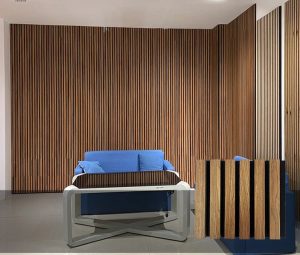Master the Art: What to Ask an Interior Designer Before You Hire
Master the Art: What to Ask an Interior Designer Before You Hire

Finding the right creative partner to design your dream space is thrilling—but it’s not a decision to take lightly. Staying updated on the latest
can help you align your vision with timeless aesthetics. Whether you’re refreshing a single room or planning a full home renovation, it’s vital to ask an interior designer the right questions before making a commitment. Getting clarity early on can prevent costly missteps and ensure your project stays on track.
Why It’s Crucial to Ask an Interior Designer the Right Questions
Hiring an interior designer means entrusting someone with your personal space, your time, and a significant financial investment. By taking time to ask an interior designer about their approach, process, and philosophy, you’ll uncover valuable insights that will guide your decision. Choosing the right
is critical to achieving both comfort and cohesion.
Building a successful partnership comes down to a few key elements:
- Clear communication about your vision
- Shared expectations for budget and timeline
- Alignment in aesthetic style and creative energy
Without these, even the most talented designer might miss the mark.
Top Questions You Must Ask an Interior Designer Before Hiring
1. How Would You Describe Your Design Philosophy?
Before you dive into styles and color palettes, start by exploring how a designer approaches projects overall. Ask an interior designer what principles guide their work and how they balance functionality with beauty.
2. What Is Your Collaboration Process Like?
Some designers thrive on client input, while others prefer to lead. Always ask an interior designer how they involve clients in the decision-making journey. Determine how much creative control you’ll have and how often you’ll be updated.
3. How Do You Manage Budget Constraints?
A beautiful design loses its appeal if it comes with financial stress. Ask an interior designer how they manage spending, allocate budgets across different project areas, and handle unexpected costs.
4. What Does Your Project Timeline Typically Look Like?
Renovations are infamous for delays. Be sure to ask an interior designer for a realistic project timeline and what contingencies they have in place for potential hiccups.
5. Can You Explain Your Fee Structure?
Design fees vary widely across professionals. Ask an interior designer whether they charge hourly, per project, or via a markup system—and what additional costs you should anticipate.
What Else to Ask an Interior Designer for a Smooth Project
Always ask to see
before making your final hiring decision. Beyond the essentials, dig deeper with these strategic questions.
6. Who Will Handle the Day-to-Day Details?
When you ask an interior designer who will be your primary contact, you avoid confusion. Understand if assistants, junior designers, or project managers will be involved.
7. How Do You Select Materials and Furnishings?
If you love exclusive finds or crave sustainable choices, it’s essential to ask an interior designer about sourcing strategies. Do they offer trade-only pieces? Will you get access to exclusive showrooms?
8. Can You Provide Recent Client References?
Nothing beats hearing about real experiences. Always ask an interior designer for a few client references or testimonials. This firsthand feedback can uncover both strengths and potential red flags.
Important Tips When You Ask an Interior Designer
When preparing for consultations, keep these pro tips in mind:
- Prepare a Mood Board: Visual inspiration helps articulate your vision.
- Set Clear Priorities: Decide what’s non-negotiable and where you’re flexible.
- Discuss Lifestyle Needs: Functionality is just as important as beauty.
- Talk About Communication Preferences: Weekly emails? Phone calls? Meetings?
Essential Terms You Should Understand
When you ask an interior designer, some key industry terms might pop up. Here’s a quick description list:
Concept Development
The initial stage where a designer crafts the broad vision for your space.
FF&E (Furniture, Fixtures & Equipment)
All movable furniture, decorative items, and fittings selected for your project.
Procurement
The purchasing and ordering of furniture, materials, and decor, often managed by the designer.
Punch List
A final checklist of minor fixes or adjustments to complete before project closeout.
Understanding these will make conversations smoother and help you feel more confident.
FAQ: What People Also Ask an Interior Designer
Q: How early should I hire an interior designer?
A: Ideally, bring a designer in during the planning phase, especially for renovations or new construction. Early input can influence architecture and layout.
Q: What documents should I prepare before my first meeting?
A: Floor plans, inspiration images, a basic budget range, and a list of must-haves help set the stage for a productive first meeting.
Q: How do I know if an interior designer is right for me?
A: Beyond portfolio style, focus on communication style, process transparency, and whether they truly listen to your needs.
Q: Can I use my own contractors?
A: Many designers are flexible, but ask an interior designer early about their preferences for working with outside vendors.
Q: Will I have a say in every design decision?
A: This depends on the designer’s collaboration style. Always ask an interior designer how much input you’ll have.
Empower Your Project by Knowing What to Ask an Interior Designer
Selecting the right creative partner isn’t about finding the most famous name or the trendiest style. It’s about connection, clarity, and trust. When you take time to ask an interior designer thoughtful questions—and truly listen to their answers—you lay the groundwork for a beautiful, stress-free project you’ll love for years to come. As competition grows, strategic online visibility becomes essential for interior designers.

